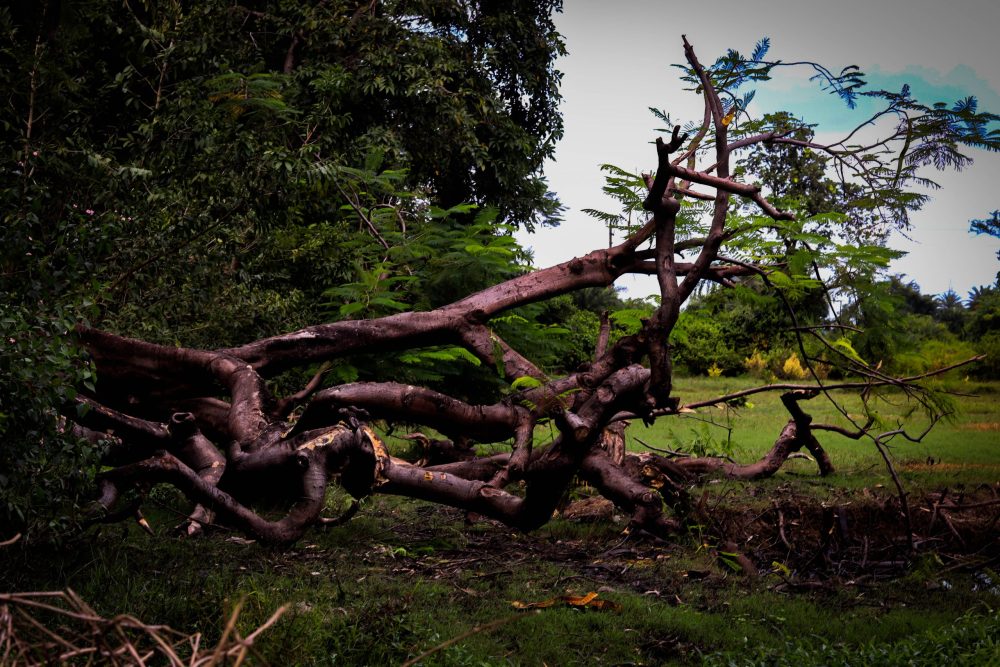Feb. 7, 2023- The recent ice storm created a lot of damage in aged and mature trees. From “up the hill” where I live in Sulphur Springs, I could see the extreme damage of weight of the ice in power lines and tree branches. Life with many others properties, I started the recovery process after the storm by evaluated the magnitude and type of damage suffered. Upon evaluation, it was clear to us that the removal of tree material was too much to be handled with hand tools and that a power chainsaw was needed. .According to Texas A&M AgriLife Extension, is important that before starting tree work with powered chainsaws, remove any broken or dead limbs that could fall from the tree. Take your time. Watch for trees with tension that could spring when cut. Clear any underbrush from around the tree that might be struck by the chainsaw and cause it to kick back. Make sure there are no bystanders, animals, cars, buildings, or power lines that may be struck by the falling tree. Clear an escape path 45 degrees to the rear of the tree fall line. Locate the best direction for the tree to fall, and plan your cut accordingly. Rain, snow, or high wind conditions increase the risk of accidents. Rain results in poor footing. Snow may accumulate in the trees and make it difficult to locate the tree’s center of gravity. Trees with thick canopies can be redirected by high winds. Many chainsaw accidents can be avoided using safe felling, limbing, and bucking techniques. Felling is the act of cutting down trees. Limbing is the act of removing limbs from the main trunk. Bucking is the act of cutting felled trees into smaller pieces for removal and transport. Small trees less than six inches caliper (diameter) may be cut all the way through with one cut. However, larger trees should be cut using a front-cut and back-cut to establish a notch and hinge to control the tree’s line of fall. Three common cutting patterns, Conventional, Humboldt, and open face.These techniques will greatly reduce the need to stay near the tree to physically guide the direction of the fall. Do not try to cut down a tree with caliper greater than the length of the chainsaw guide bar. This will increase the risk of kickback injury. Most accidents occur during limbing operations. A small chainsaw is generally easier to maneuver through thick branches. Long chainsaws increase fatigue and are more likely to contact other branches, resulting in kickbacks. Stand at an angle to the limbs you are cutting, so that if the chainsaw suddenly kicks back or cuts through a limb, the chainsaw will not strike you. Plan each cut. Beware of shifts in the main trunk that will result from cutting weight-bearing limbs. Clear the area periodically of cut limbs so that you don’t accidentally step on cut limbs and lose your balance during a cut. Grasp the forward handle with the left hand, palm down. Wrap your fingers around the handle bar, and keep it between your index finger and thumb. Firmly grasp the rear handle with the right hand. Never stand directly behind a cut. Stand on one side of the cut. Saw only with the bottom part of the chain using the part close to the bumper. Never use the tip or nose of the chain to cut. Maintain two hands on the chainsaw at all times. Extend the left arm while gripping the front handle. If the chainsaw does kick back, it will kick up over your shoulder instead of directly at you. Never attempt to cut a limb above mid-chest level. In this position, your strength is limited and you are more likely to lose balance if the chainsaw kicks back. Instead, use a sturdy ladder to reach high limbs. Always work with someone watching each other and keeping safe.
For more information on this or any other agricultural topic please contact the Hopkins County Extension Office at 903-885-3443 or email me at [email protected].







